The biggest myth about how to find your purpose is: I’ll get there by adding more to my plate.
I’ll add new habits, and become massively productive! I’ll add new virtues, and become a better mom/wife/sister/friend/human! By adding more, I’ll have a better life, then I’ll finally be happy.
We’ve run this experiment, though, you and I, and it simply doesn’t work. The constant pressure leads to overwhelm, exhaustion, and burnout. But if adding more isn’t the solution, what is? How do we build a life that feels meaningful and on-purpose?
The secret is subtraction. The most effective way to live on purpose is to get still and listen for the deep-down truth of your life. To turn down the noise, and remember who you were born to be.
When you do this, you’ll get very clear instructions about what’s best for you going forward, and where to put your focus. And rest assured, this is an active process. In fact, subtraction is often more demanding than addition.
Think about it: Most of us have lots of ideas about what to add into our lives to “improve” them. But when we’re asked what we’re going to subtract, we get quiet. We’re not taught to think like that!
In this post, you’re going to learn how to start subtracting the things that keep you from recognizing your purpose. Let me tell you a story about the time I learned to do just that.
How do I discover my purpose in life? By subtracting!
When I picked out my first pair of glasses as a nearsighted eight year old in New Jersey, I didn’t know what I was getting into. The pale pink frames seemed pretty at the doctor’s. But the third-grade class bully had a field day making fun of me.
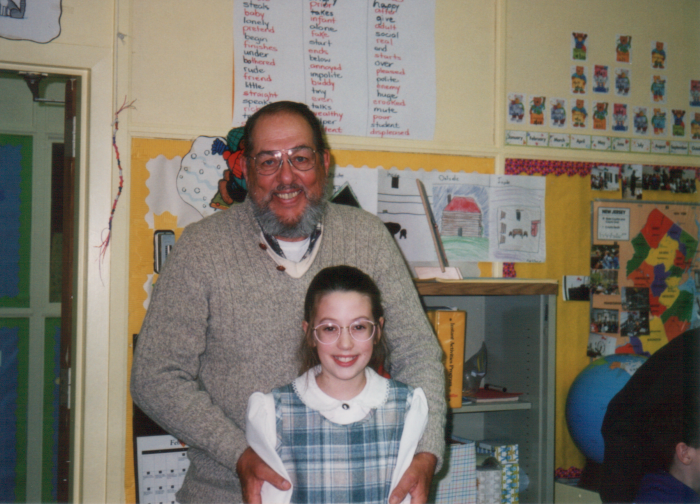
Me and my grandfather; one of the few surviving photos of the glasses!
For months, I felt deeply ashamed of those glasses. I only put them on when I absolutely needed to see.
And then my family took a church trip to Virginia Beach. For the first day or two, I moved through the world the way I usually did: slouched, scared, and very self-conscious about my glasses.
But then we went to a playground and I swung on the swings next to my little brother. Since I was wearing my glasses, I automatically scanned the playground for kids who might make fun of me.
But there weren’t any. Most kids were in school on that beautiful day. I felt the sun on my face, the wind in my hair. And all of the sudden something important dawned on me.
I don’t know anybody in Virginia Beach! Nobody here cares about my glasses!
As I pumped my legs and swung higher, I had the most wonderful feeling of freedom and expansion.
For the rest of the week, I reveled in the absence of self-consciousness. It felt so good that when I got back to school, I stopped taking my glasses on and off and just left them on my face.
The school bully kept up her brutal commentary for a while, but her words didn’t have the same impact. That moment of freedom on the swings stayed with me.
That experience taught me something important about how to find your purpose – something you may have overlooked. You may think that in order to be happy, you need to ADD something to your current experience.
In the glasses example, it would be easy to think: “For Caroline to feel better, she needed someone to tell her that they love her, and they like her in those glasses!”
Not so, though. My parents told me those things all the time.
For me to be happy, I needed to SUBTRACT something that was causing suffering. Once I realized that my crippling self-consciousness could be released, happiness was right there.
Modern happiness research bears this out. I like how fellow writer Pete Adeney sums up the findings:
“Fixing your persistent problems is more effective than just doubling down on the things that are already good in your life.”
Why is it so hard to find your purpose in life
Well, it feels that way because we haven’t yet fixed the first and most common problem you’re likely facing: a surfeit of stuff to do, with little time to rest and recover.
Why is it so hard to find your purpose in life? Because the noise is drowning out the signal. Your life purpose is like a radio station that’s always broadcasting to you, it’s just that there’s so much static and interference that it’s difficult to hear it.
If that resonates, here’s how you start resolving the issue. I invite you to join me in something I call the Minimum Day challenge. (Thank you to Martha Beck for coining the term, “minimum day.”)
Here’s how this challenge works for me and my coaching clients.
Step 1: Take a day or two off from work. One day is the minimum, but if you want to go all in, do three or four days. If you’re hard-pressed to find a day, this is even more important for you! And, I get what it’s like when you feel stuck and can’t see a way forward.
I too have sat with my head in my hands, exhausted at the end of the day. I’ve been the primary breadwinner for our family for 15+ years, running a six-figure business while caring for two small children and writing books and managing a couple of rare health conditions.
So if you feel like your life is falling apart, I empathize with your struggle. And, there’s almost certainly something you can do to make your days easier and give you some breathing room.
Here, let me help you free up time to pursue your purpose (and take at least one minimum day!) with the sacred circle exercise. Enter your email address to receive it:
Free Up Time to Pursue Your Purpose with the Sacred Circle exercise!
Step 2: For the designated minimum days: do the minimum. Meaning, do as little as possible to sustain your life and the life of any animal or person that depends on you.
Yes, that means doing nothing productive. You will not be getting ahead, planning, preparing, or problem-solving. On a minimum day, you basically do one thing: Rest.
Step 3: Reckon with your incredulity. Let it sink in that yes, you’re going to rest for a whole day, or more. Take a deep breath and accept that at least for the first day or two, you probably won’t get out of bed very much.
Instead, you’ll sleep as much as you need to. You’ll lie in bed as much as you want to.
Most of us in the modern world are chronically tired, so if you haven’t been taking minimum days regularly, it usually takes at least a day or two of rest for you to actually feel like doing something.
That said, when you do feel like doing something, let yourself do it! If you truly want to go for a walk, fine, enjoy it. If you want to take a shower, do it. But if you don’t want to do it, don’t do it! The idea behind the minimum day is that there’s no pushing or striving.
How do I find my passion or purpose?
By doing minimum days!
Whenever I bring up minimum days to recovering perfectionists, I either get deep relief or deep skepticism, and sometimes both. It’s fine! I get that it’s a big deal to start doing less for a change.
After all, our culture tells us that we have to work constantly in order to be successful. The woman I coached in this video was working 14 hours a day, and couldn’t see a way out.
For the skeptics among us, here are a few rational justifications for minimum days:
First and most obviously, minimum days let you rest and recover from all the pressure you’ve put on yourself. Minimum days help you to embrace imperfection, unwind, and give yourself permission to be human.
Elite athletes and creatives all prize recovery time, because they know it actually differentiates top performers.
To quote Chris Cleave’s novel Gold, about the lives of elite cyclists:
“At the elite level it wasn’t the training that set you apart — all the guys trained themselves to the edge of destruction. Victory lay in how well you managed the recovery phase.”
Minimum days are a way to jump-start your recovery.
Secondly, taking minimum days helps you to develop a crucial skill: to practice tuning into the feeling of being led by desire, as opposed to the feeling of being led by pressure.
Frankly, most of us have forgotten what it feels like to do what we want to do. We’re so accustomed to pressuring ourselves into action, because we believe that this is the only way we’ll get things done.
But when we actually give ourselves real rest without pressure to perform, we notice something interesting: Once we’re rested, our bodies naturally get up and start doing things! (Disease or clinical depression are exceptions; see a doctor or a counselor if you’re concerned.)
Lastly, taking minimum days is actually a great way to break up procrastination jams. It sounds paradoxical, but it works. If you are pressuring yourself to do something, try completely dropping the pressure for a set period of time. Declare a day totally off limits from pressure.
Then, notice whether or not you actually DO feel a desire to do that thing. If it’s on the path to your purpose, desire will return. If you’ve taken your minimum days and feel zero interest in doing the thing, strongly question whether or not it needs to be done by you.
If you take the Minimum Day Challenge, you are going to start making more decisions based on your internal sense of what’s true and good for you, not based on cultural norms and expectations. You are going to stop asking, How do I find my passion or purpose? and start accessing the part of you that already knows the answer.
At that point, your life might start to look pretty weird to other people. And that’s a good thing, because it means that it’s starting to really become yours.
How do I find my path in life?
My maternal grandparents moved to Arizona around the time I was born. They left their home in urban New Jersey to live in the desert and build a cord wood house.
It took them years to build that house. When I was younger they lived in a trailer, and during summer visits we’d stay in a small camper next door. And I’d watch this house being built, little by little.
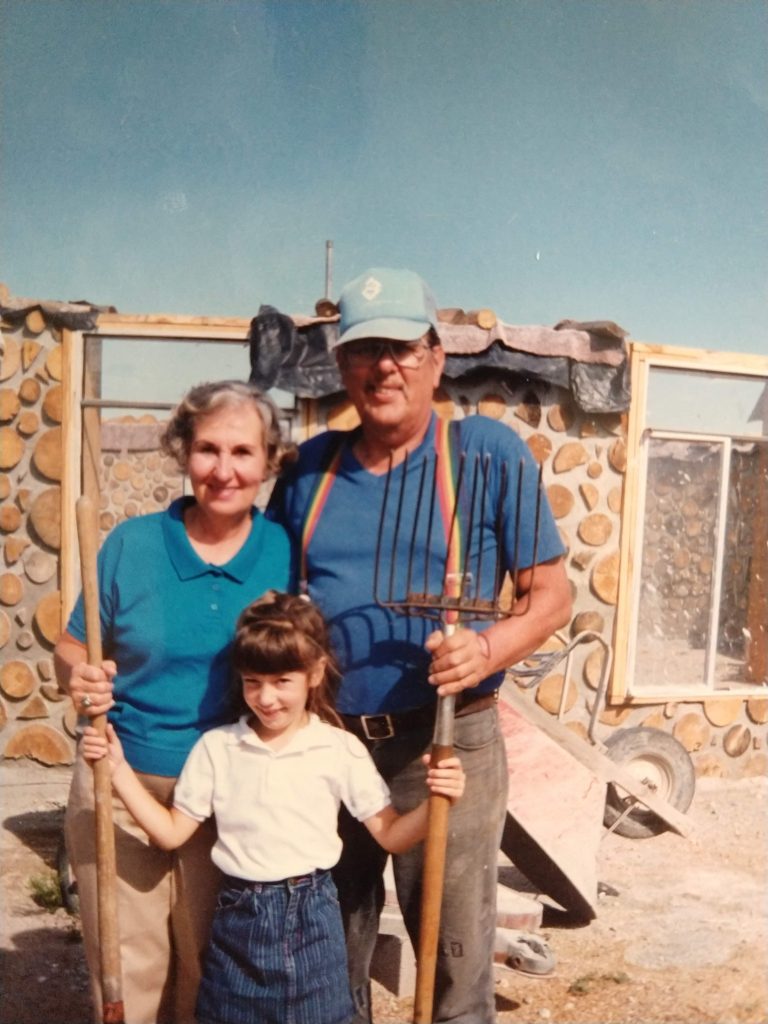
Me and my grandparents
That house was really something. It had a wood stove and a greenhouse and a composting toilet, so it would work well off-grid. My grandfather did not have much to fund this project – he repurposed absolutely everything – but he was rich in books and blue sky.
I’m glad I got to spend summers watching him build that unconventional house. It showed me that there are many different ways to build a life.
In Cheryl Strayed’s essay We Are Here to Build the House, she writes about how important it is to make:
“a structure composed of our own moral code. Not the code that only echoes imposed cultural values, but the one that tells us on a visceral level what to do.”
To quote one of my coaching clients, this means:
“listening to the internal tuning fork. Something goes Nnnnn, and I know it feels right. I don’t have to argue intellectually; in my core I just know.”
Today I invite you to listen to that feeling and build the life that feels true to you. Start right here, right now.
If you’re asking, How do I find my path in life?, listen up. Here’s the way you start.
Ask yourself: What are the times in my life where I KNEW that something was right for me? (And wrong for me?) What are the specific sensations, the energetic signatures of my knowing?
Then, practice trusting that internal tuning fork every single day. Go toward the resonance, and away from the dissonance.
Living this way means that you will enjoy greater freedom. It also means that you will lose some things and some people.
When my grandparents moved to Arizona, it meant leaving their old life in New Jersey behind. It meant living far away from their two children and five grandchildren. It’s easy to look at that as a loss.
And yet – wasn’t it also a tremendous gain? What if the fact that my grandfather built that cord wood house is part of the reason I’m writing to you today? What if his legacy lives on in these words?
When you build a life according to your deepest values, you give a gift to future generations. You show them what a life of freedom looks and feels like. You make something that outlives you.
Isn’t it time to use your freedom to build something beautiful?
If you like this post, you’ll love Free Up Time to Pursue Your Purpose!
Enter your email address below to receive it, along with my emails to support you in living like you don’t owe anyone and you’ve got nothing to prove.
Free Up Time to Pursue Your Purpose with the Sacred Circle exercise!
Share This:
Comments
Related Posts
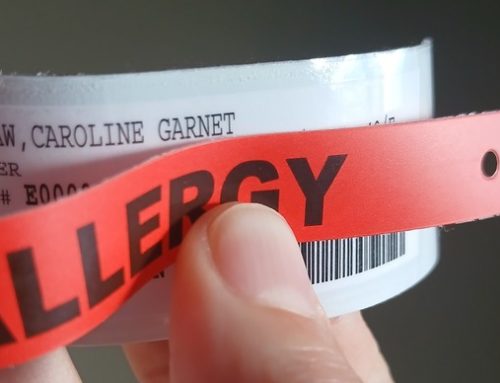
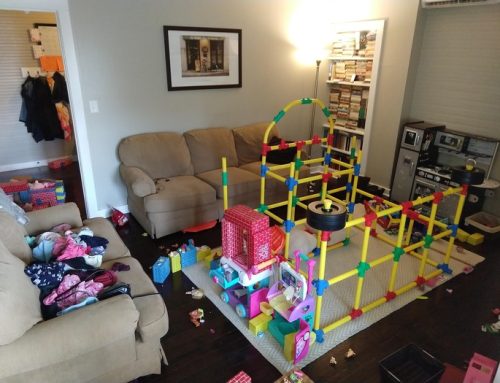
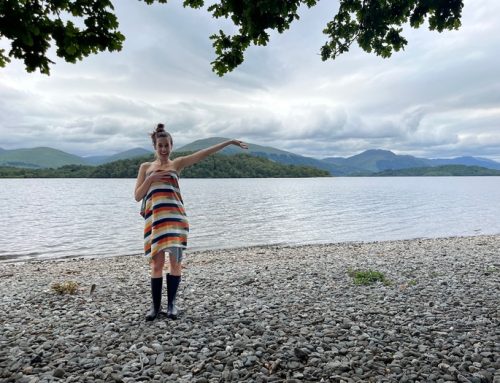
And if you don’t have any minimum days scheduled, your body will make them happen (or is that just me?). Might as well claim it instead of beating myself up about it.
Bridget, that is so true. Well put. It’s been my experience also: eventually, the body will demand some minimum days! So yes, we may as well plan for them, and fold them into the fabric of our lives.